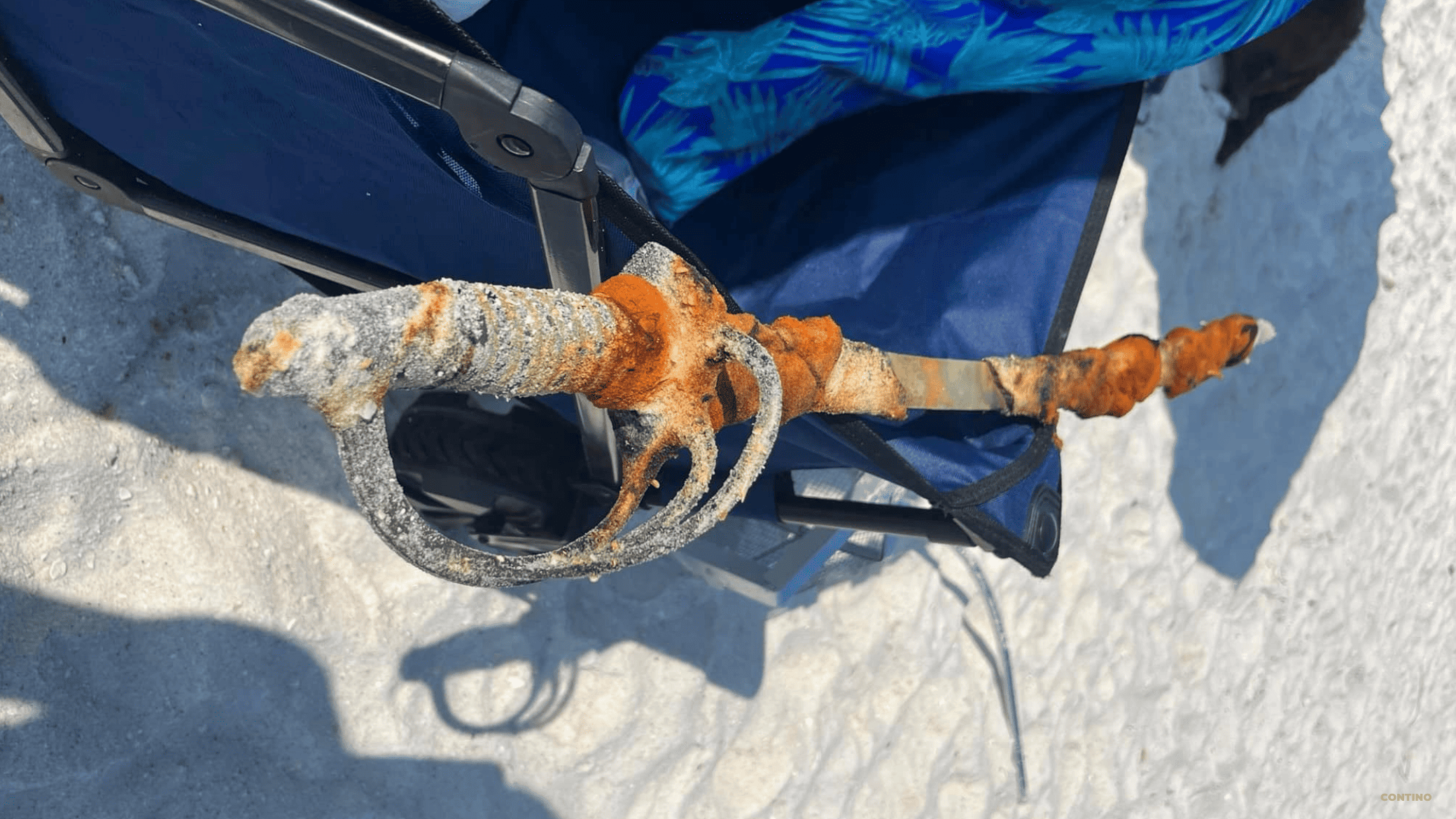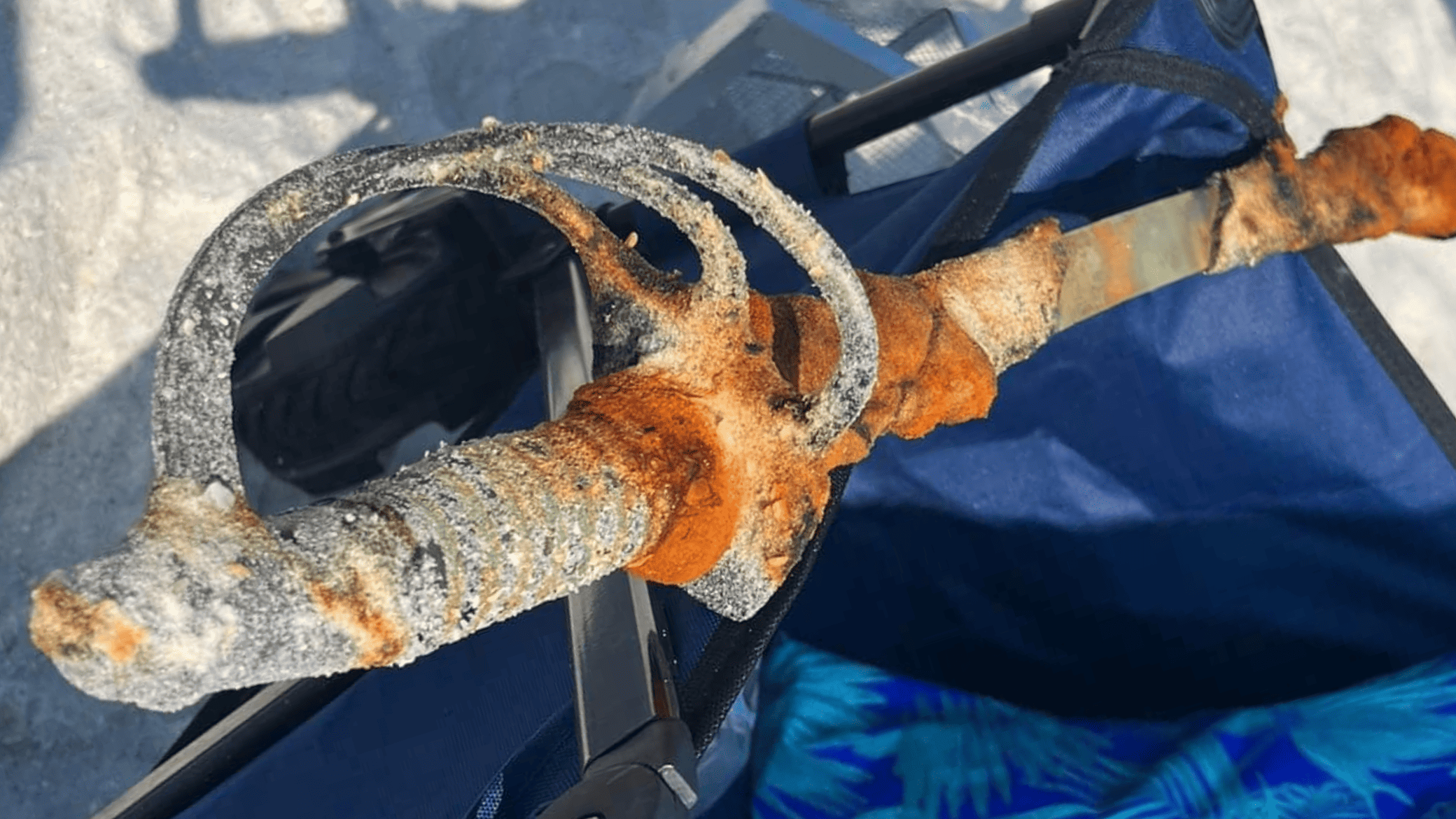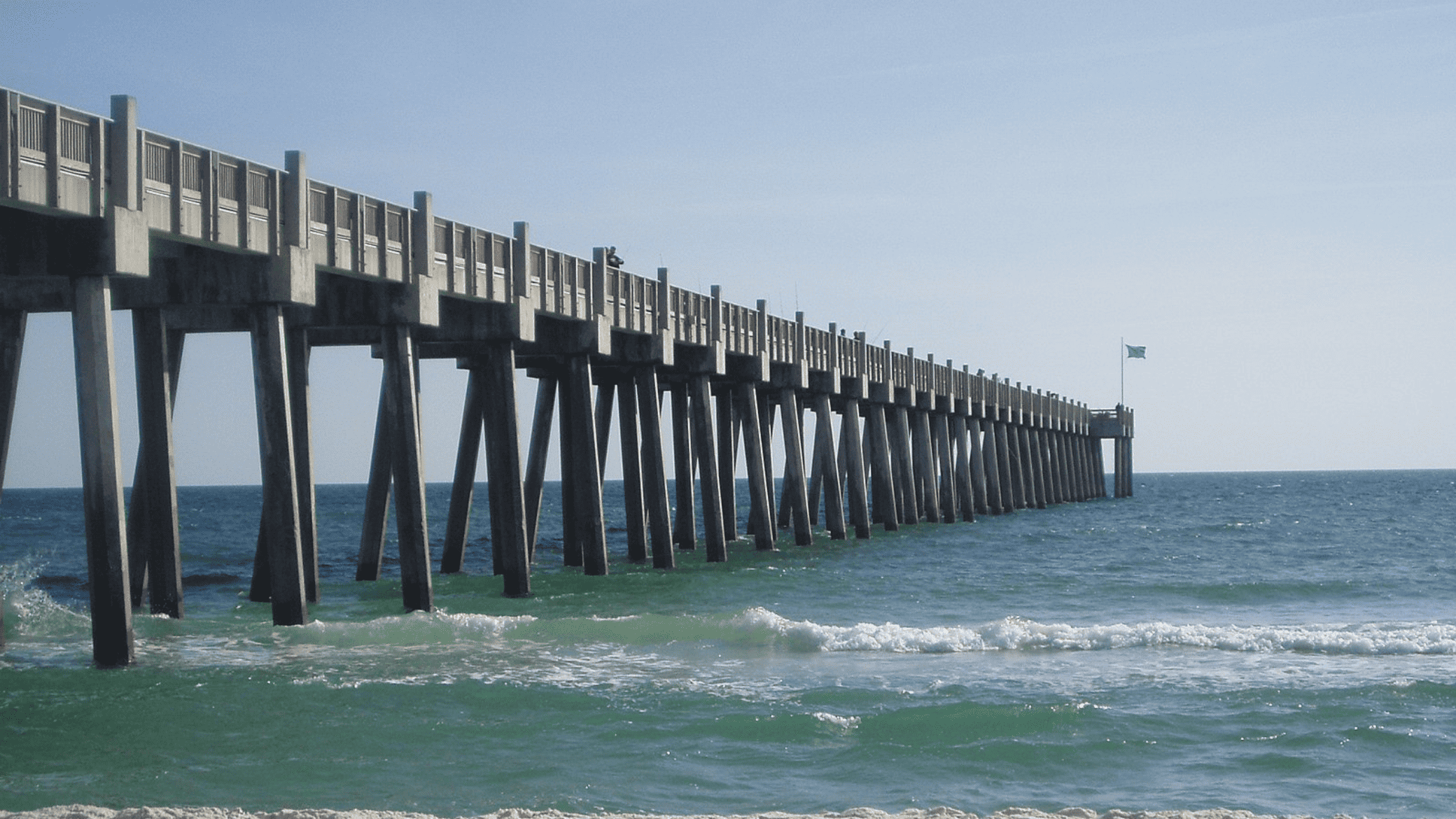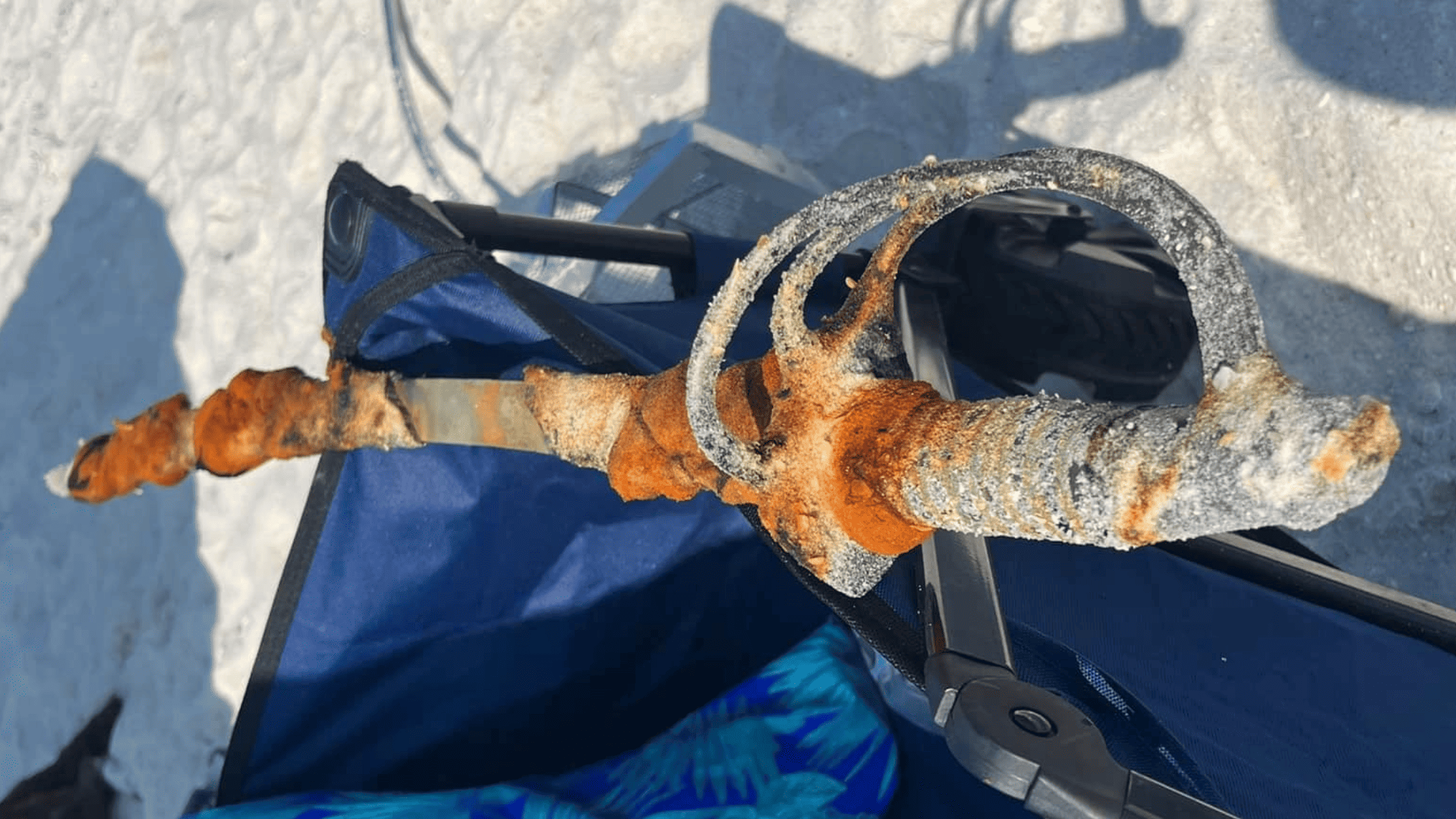Ancient Sword Found On Florida Beach
A recent Facebook post detailing the remarkable discovery of a 19th-century American military sword off the coast of Pensacola Beach has taken the internet by storm. At this time of writing it had been shared over 7,000 times.
The viral post, which has captured the attention of history enthusiasts and curious onlookers alike, featured the firsthand account of Patty Sacco, whose husband stumbled upon the sword while combing the beach for seashells approximately 30 yards out in the Gulf.
Sacco recounted the unexpected find, stating, “The waters were pretty clear, and he saw part of the handle sticking out from the sand. Pulled on it a couple of times, and lo and behold a sword, lol.”

Ancient Sword Found On Florida Beach
Given the rich historical tapestry of the region, the unearthing of artifacts along the coastline is not an entirely uncommon occurrence. However, this particular discovery has ignited widespread intrigue.
Encouraged by the overwhelming response, Sacco and her husband have been directed by numerous online users to seek assistance from the University of West Florida (UWF) and the Florida Public Archaeology Network (FPAN) in determining the sword’s authenticity.
Recognizing the significance of the finding, UWF and FPAN have already established contact with the couple, expressing their willingness to collaborate and examine the artifact more closely if requested.
Also See: Saying Goodbye to Beesleys Point Power Plant Tower – Drone Video

In the case of offshore discoveries without the means to gather coordinates in the water, coordinates from the nearest point on land should be obtained. Once these steps have been taken, contacting the local FPAN office will facilitate the documentation of findings and prompt notification of the appropriate land manager.
Florida Public Archaeology Network archaeologists promptly received an email from Patty Sacco regarding the remarkable find by the local couple. In response, they shared news of the discovery on their own social media platforms.
While Sacco did not bring the sword in person for examination, FPAN archaeologists meticulously analyzed the photograph she shared online, doing their utmost to address her inquiries, even as they harbored questions of their own.

Archaeologist Grinnan suggested that the recovered sword could potentially hail from the Civil War era, potentially belonging to a Union soldier who had traversed the beach. During that tumultuous period, skirmishes between encampments of Union soldiers and the Confederacy occurred at Fort Pickens, situated on the western edge of Santa Rosa Island, lending credence to the hypothesis.
Pensacola boasts a rich and varied history that stretches back thousands of years. The area’s historical significance can be traced to its strategic location, positioned along the Gulf Coast and Pensacola Bay.
In the Pre-Colonial Era, Prior to European arrival, the region was inhabited by Native American tribes, including the Pensacola people, who gave the area its name. These indigenous communities thrived on the abundant resources the coastal and riverine environments provided.

In the late 1690s, the Spanish established a permanent settlement, known as Presidio Santa Maria de Galve, which marked the beginning of a long period of Spanish influence over the region. Pensacola became an important Spanish military and trading post, serving as the capital of Spanish West Florida.
The British gained control of Pensacola in 1763 after the Treaty of Paris, which ended the French and Indian War. However, the Spanish regained control during the American Revolutionary War. In 1821, following the Adams-OnÃs Treaty, Pensacola and the rest of Florida came under the jurisdiction of the United States.
Also See: FIRST LOOK at Showboat’s Island Waterpark in Atlantic City
During the Civil War, Pensacola played a pivotal role due to its strategic location. It was the site of Fort Pickens, a Union stronghold, which successfully resisted Confederate attempts to seize control of the bay. The city itself shifted hands multiple times during the war.

With such rich history, it’s no wonder that a treasure like this was found just on the beach. It makes you wonder what is hiding under our feet when we go to the beach.
Speaking of treasures, just this past March, 18 sunken ships were discovered in the Delaware Bay. These World War II ships had never been documented until now.
Below are their exciting history. Before you watch please help us hit 100,000 subscribers by hitting that subscribe button.
